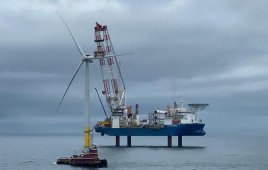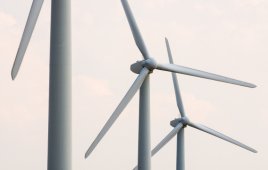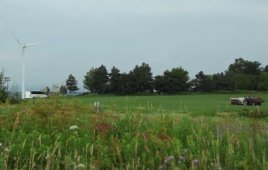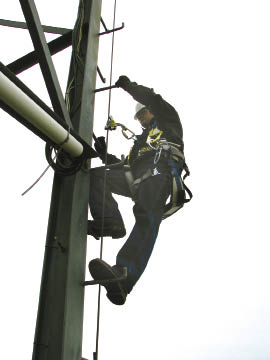
A technician climbs with assistance from an ExoFit NEX wind harness from Capital Safety. The unit meets all major international standards.
Turbine manufacturers are looking into globalized equipment so workers can travel anywhere in the world without having to switch sets of fall-protection gear, thereby eliminating costs and transportation hassles. Technicians will often travel one week to the United States, the next to China, the following to Australia, and they must have versatile, high-quality equipment that meets international safety standards wherever possible.
Manufacturers of fall-protection equipment must take all standards into consideration when developing new products and updating existing designs. The main standards to comply with are ANSI, OSHA, CE, CSA, and AS-NZS. You could compare safety standards to electrical outlets – traveling to Europe calls for an adapter for the power outlet because the European standard differs from U.S. outlets. Electrical standards were developed for each country’s individual needs. Similarly, fall protection standards evolved the same way, with each country creating a code that worked for them. However, the wind industry is so global that it’s critical for workers to have products they can use all over the world, regardless of the standard. ANSI, OSHA, CE, CSA and AS-NZS standards are encountered 99% of the time, so equipment meeting these standards will cover nearly all bases.
Manufacturers of fall-protection equipment are also redesigning previous harnesses and lanyards to meet all major industry standards. While this requires some retooling, it’s a huge benefit to turbine manufacturers that a piece of safety equipment will meet their needs regardless of work location.
The industry is trending to think in global terms. As fall protection manufacturers begin responding to the evolving nature of the wind energy industry and the trend towards globally compliant equipment, the safety and efficiency of wind energy workers will increase and the costs for OEM’s will decrease.
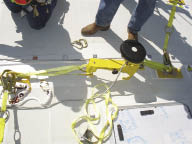
The globally certified R500 Rollgliss Rescure Device would let a crew safely lower an injured member.
Oliver Hirschfelder
Global Wind Energy Director
Capital Safety
www.capitalsafety.com
Filed Under: O&M, Policy, Safety


